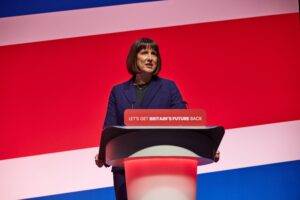Rachel Reeves, Labour’s Shadow Chancellor, is under mounting pressure from her colleagues to consider raising capital gains tax (CGT) as part of an ambitious autumn budget designed to fund public services.
With increases in income tax, national insurance, and VAT off the table, Reeves is exploring alternative revenue-raising measures.
Labour insiders reveal that Reeves is evaluating up to twelve potential fiscal strategies to bolster the public coffers. A source close to the discussions commented, “Rachel is considering a range of measures, each designed to contribute modestly to the overall budget, cumulatively generating significant funds.”
The push for a CGT hike comes as part of a broader strategy described by one Labour figure as a “kitchen sink” approach, aimed at securing the necessary funds for radical public service investment and reform. This strategy involves unveiling all potential fiscal measures upfront to justify substantial interventions.
Despite these deliberations, a Labour spokesperson emphasised the party’s commitment to fully costed and funded plans, asserting, “We have identified specific tax loopholes to close for immediate revenue without increasing taxes.”
The proposed plans emerge amidst a heated debate with the Conservative Party over tax policies. The Conservatives have pledged not to raise property taxes, challenging Labour to match their “family home tax guarantee”. Prime Minister Rishi Sunak has accused Labour leader Keir Starmer of planning extensive tax hikes, a claim Labour has dismissed as misleading.
Reeves has already ruled out significant tax increases, including almost all major taxes, yet acknowledges the pressing need for new revenue streams to avoid deep cuts to public services in the next parliamentary term.
Labour’s current fiscal proposals include increasing the windfall tax on oil and gas companies, eliminating tax exemptions for private schools, and tightening regulations on non-doms. However, these measures alone may not suffice to bridge the funding gap.
The Resolution Foundation recently warned that without additional revenue, the next government could face £19 billion in cuts to unprotected departments by 2028-29, impacting sectors like local government, the Home Office, and the courts.
Some Labour members advocate for aligning CGT rates with income tax, potentially increasing the higher rate from 24% to 40% or 45%, estimated to raise £8 billion. This approach mirrors a move by former Conservative Chancellor Nigel Lawson in 1988, later reversed by subsequent Labour budgets.
Alternatively, Labour could revert to the pre-2023 budget CGT rate on second homes, raising it from 24% to 28%. However, the Office for Budget Responsibility predicts minimal fiscal gain from this adjustment.
Another option under consideration is reinstating the health and social care levy, a 1.25 percentage point rise in national insurance introduced by Boris Johnson and later scrapped by Kwasi Kwarteng. This levy, which would have included pensioners, was partially intended to fund health service improvements. Despite support from notable figures like Sir Nicholas Macpherson, former Treasury head, insiders suggest Reeves is unlikely to reintroduce it to avoid breaking her pledge against national insurance hikes.
As Labour officials prepare to finalise the party’s manifesto, due next week, the focus remains on finding viable fiscal solutions to ensure robust and sustainable public services under a potential Labour government.
Read more:
Rachel Reeves Faces Pressure to Raise Capital Gains Tax to Fund Public Services

